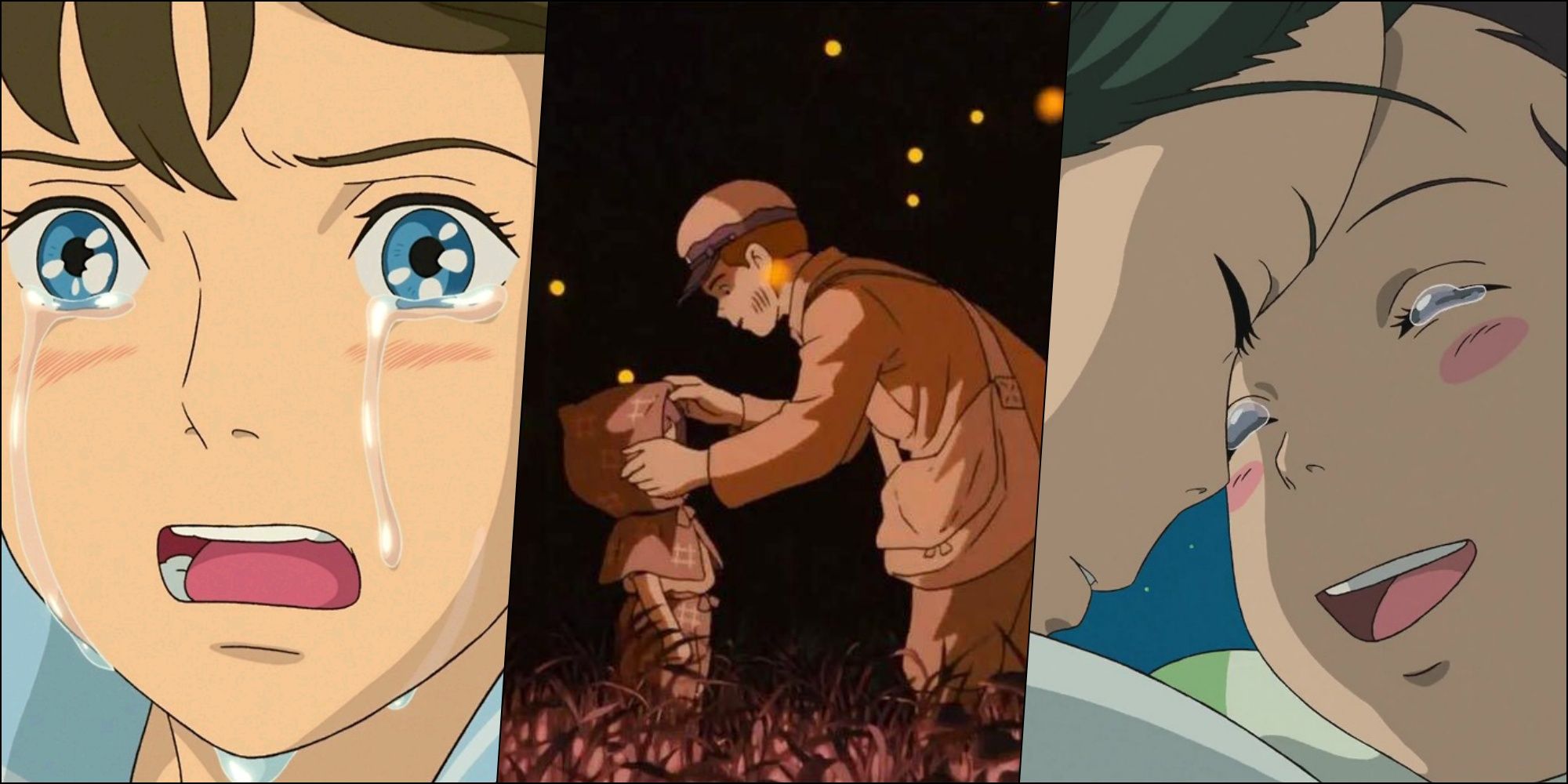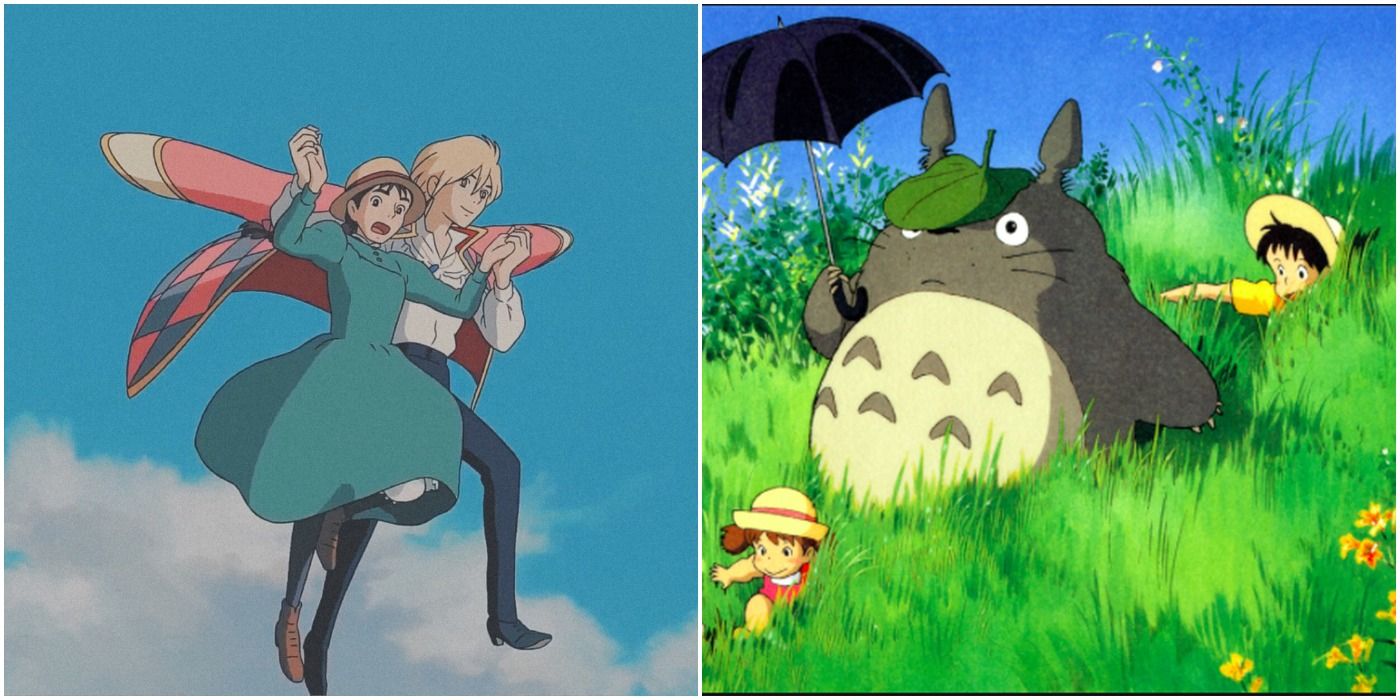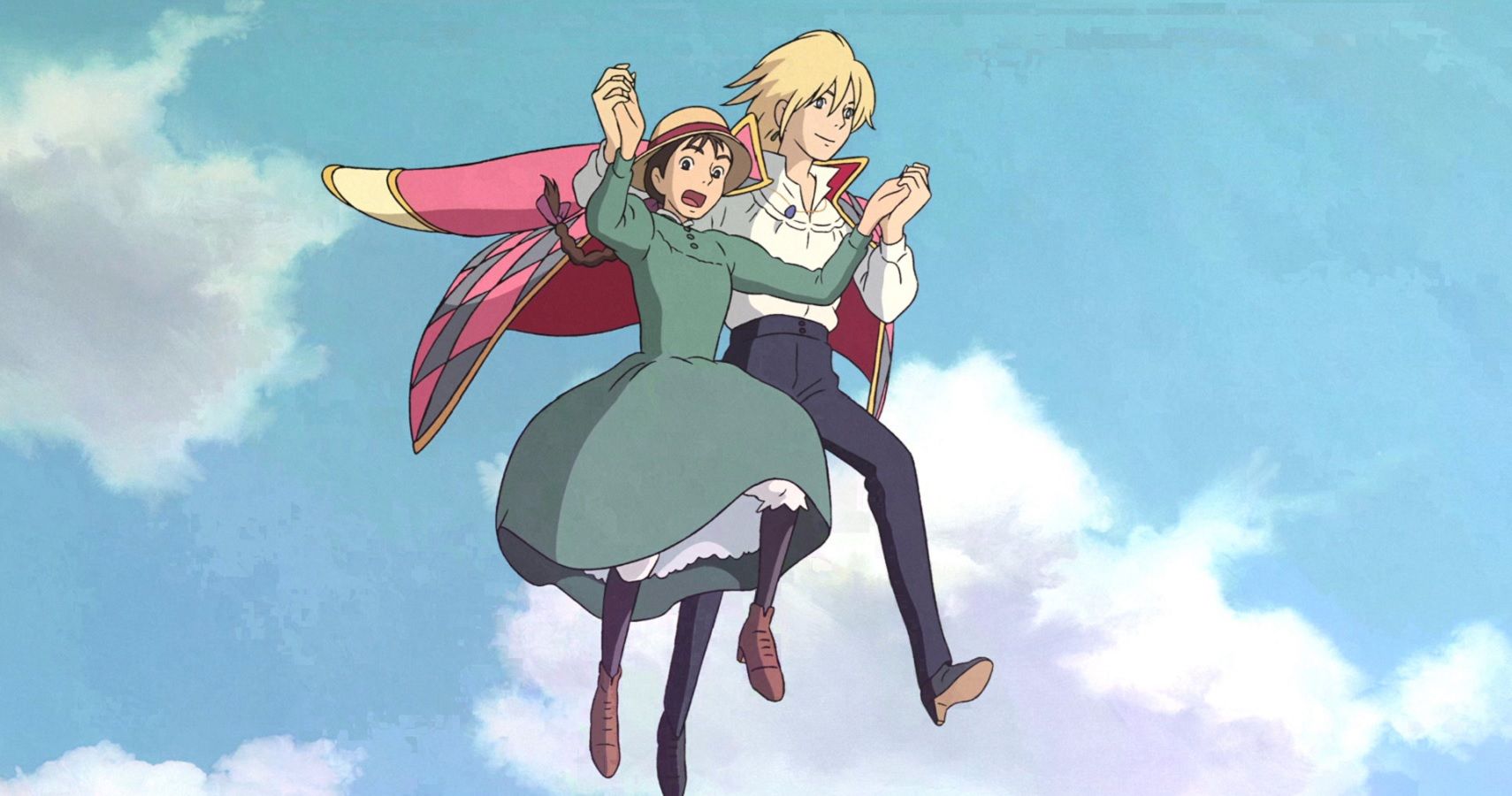Summary
- Studio Ghibli characters’ MBTI types offer insight into their personalities.
- Fans can explore characters from beloved films like
Spirited Away
and
Princess Mononoke. - From caregivers to adventurers, each character’s personality type adds depth to their story.
With dozens of complex and layered characters in their films, analyzing the Studio Ghibli characters MBTI classifications makes for some fascinating reading, and is a great way for fans to fully explore what makes each of them so endearing. Films like Spirited Away, Princess Mononoke, Castle In The Sky, and Howl’s Moving Castle are practically rites of passage on any anime fan’s journey through the medium. Hayao Miyazaki and the rest of the folks over at Studio Ghibli have been cranking out some of the finest animated feature films for decades now.
While the studio is predominantly known for its beautiful hand-drawn animation, most of Studio Ghibli’s protagonists are complex and powerful. They’re beautiful examples of well-written characters, making them perfect for matching with the Myers-Briggs® personality types. As such, many of the fan-favorite characters from Studio Ghibli films can be analyzed and their personality types explored, further highlighting why each is so memorable.
Related
Every Studio Ghibli Movie, Ranked Worst To Best
From beginning to end, we’re taking a look at the vast and beautiful filmography of Studio Ghibli, ranked from worst to best.
Kiki (Kiki’s Delivery Service)
The Crafter – ISTP
One of the clearest Studio Ghibli character MBTI personality types is Kiki, the titular hero of Kiki’s Delivery Service. Kiki is a clear example of an ISTP, also known as a Crafter. For a 13-year-old trainee witch trying to make it in an unfamiliar town, Kiki doesn’t take long to find a way to be productive. Likewise, ISTPs tend to thrive on constantly having a new challenge thrown their way.
Kiki makes plenty of mistakes along the way and that makes her perfectly matched to a personality type that tends to rely on hands-on experience and a trial-and-error approach in order to find their feet.
Rather than standing still, it’s change that drives Kiki to do her best and that reflects a unique personality type. As the name suggests, ISTPs are naturally creative and Kiki is no different. Kiki makes plenty of mistakes along the way and that makes her perfectly matched to a personality type that tends to rely on hands-on experience and a trial-and-error approach in order to find their feet.
San (Princess Mononoke)
The Adventurer – ISFP
Princess Mononoke is one of the most adult Studio Ghibli movies, and heroine San is equally one of the most complex and layered characters created by the studio. It’s also clear that, when it comes to MBTI types, San falls under the category of Adventurer, or ISFP. San is courageous, stubborn, and willing to fight for what she cares about even if that means she’s fighting alone.
Similarly, ISFPs are pathfinders, people willing to go ahead and clear the way for everyone else. They have an introverted nature and a true aptitude for examining a situation exactly as it is. ISFPs make great adventurers because they don’t allow complications to slow them down. San understands the issue of encroaching humans and forms a straightforward plan to deal with them. Finally, her perceptive nature grants her the type of quick thinking that would be expected of any good adventurer.
Tatsuo Kusakabe (My Neighbor Totoro)
The Caregiver – ESFJ
My Neighbor Totoro may be most famous for having some of the most iconic of Studio Ghibli’s beloved non-human characters, but that doesn’t mean it doesn’t have some distinctive personalities present. One of these is Tatsuo Kusakabe who, charged with looking after his daughters whilst balancing his job with visits to his sickly wife, seems to have the weight of the world on his shoulders.
Caregivers are nothing if not reliable and Tatsuo manages to handle the delicate balance with a gentle smile and helpful word here and there.
As would be expected from his role in the narrative, Tatsuo is a clear example of The Caregiver — ESFJ — among the Studio Ghibli characters’ MBTI types. Luckily, Caregivers are nothing if not reliable and Tatsuo manages to handle the delicate balance with a gentle smile and helpful word here and there. At their best, ESFJs can be the extraverted glue that holds communities together, and it’s easy to imagine Tatsuo in that role for his family.
Ashitaka (Princess Mononoke)
The Mediator – INFP
Alongside San, the other hero in Princess Mononoke is Ashitaka, and just like San is also easy to figure out the personality type for. When it comes to MBTI, Ashitaka is one of the best examples among Studio Ghibli characters of a Mediator, or INFP. Ashitaka has a strong sense of right and wrong. He is always striving to do what he feels is right, no matter what the sacrifice is to himself, which explains why he’s one of the best-liked Ghibli characters. INFPs are true idealists and are often the person most dedicated to the feelings of the group in any given situation.
Unlike his extroverted cousins, the ENFP, Ashitaka is more like to find a single worthy cause to throw himself into, rather than spread himself thinly and risk burnout while accomplishing nothing. Ashitaka and INFPs like him may not add much logic or strategy to the party but they are the ones showing time and time again that the world can be a kinder and gentler place if everyone just tries a little harder.

Related
14 Most Emotional Endings In Studio Ghibli Movies
Studio Ghibli movies are filled with wonder and beauty, but they also feature some of the most emotionally charged endings in cinema.
Princess Sheeta (Castle In The Sky)
The Artist – ISFP
1986’s Castle In The Sky contains some of the most layered and nuanced characters of any Studio Ghibli movie, and among them is Sheeta. Determined yet humble, Sheeta is a prime example of the ISFP type — the Artist — among the MBTI of Studio Ghibli characters. Sheeta is quiet and reserved, especially around new people. She has a hard time getting near others because of the danger her very presence brings them. She is the rightful princess of Laputa but, more than that, she is a polite, quiet, and considerate person.
ISFPs have a strong sense of right and wrong and tend to let their moral compasses make the decisions and Sheeta is no exception. Sheeta has a ton of responsibility on her shoulders, yet she still finds the strength to trudge onward when all seems lost. ISFPs are the people that can be relied upon when the going gets tough and all that’s needed is someone who can get the job done.
Pazu (Castle In The Sky)
The Entertainer – ESFP
Alongside Sheeta, Castle in the Sky‘s Pazu is another Studio Ghibli character with a clear Myers-Briggs® personality type. Pazu is a solid example of an ESFP, known as the Entertainer. From the very beginning of the movie, it’s easy to see that Pazu is someone who has no problem with giving out their time in order to help people.
ESFPs are the kind of people willing to do anything to help out a good friend and Pazu perfectly encapsulates that spirit in
Castle in the Sky
.
Pazu is active in the mines, helping the miners that work down there, but he is also very friendly. That makes sense, as ESFPs are very social creatures and have a strong sense of aesthetics and style. Pazu is empowered by those around him and sensitive and reactive to the feelings of the people he’s with. ESFPs are the kind of people willing to do anything to help a good friend and Pazu perfectly encapsulates that spirit in Castle in the Sky.
Setsuko (Grave Of The Fireflies)
The Performer – ESFP
Grave of the Fireflies has a reputation for being one of the most heartbreaking movies in Studio Ghibli’s catalog and that’s thanks in no small part to its memorable cast of characters. In particular, the sibling pair at the heart of the movie is unforgettable. The young Setsu, as well as being one of the most endearing characters ever conceived for a Studio Ghibli movie, is also a clear example of an ESFP, the Performer.
She is humble, considerate, and curious, all hallmarks of the ESFP.
Setsuko is by far the purest thing in the tragic world of Grave Of The Fireflies. She is humble, considerate, and curious, all hallmarks of the ESFP. This personality type has a great capacity for love and understanding, and that’s demonstrated in how deeply she cares about her brother and understands far more about her world than anyone that age should.
Nausicaä (Nausicaä Of The Valley Of The Wind)
The Advocate – INFJ
The titular hero of 1986’s Nausicaä Of The Valley Of The Wind has one of the easiest Studio Ghibli personality types to pinpoint, as Nausicaä is an INFJ, or Advocate, through and through. In tune with their emotions but often possessing a more reserved public image, INFJs have a rich internal world that they can escape to at times.
In the form of her garden of jungle plants, Nausicaä has a similar secret world of her own. Not only that but this personality type tends to be guided by an optimism and a belief in the fundamental goodness of humanity. Despite the toxic jungles and warring nations of Nausicaä Of The Valley Of The Wind, Nausicaä’s belief that humans can live in harmony with each other and nature never wavers even when that belief puts her in harm’s way.

Related
10 Most Stunning Frames From Studio Ghibli Films
Studio Ghibli films are packed full of strong emotions and lessons for the audience. One way these are conveyed is through the beautiful animation.
Seita (Grave Of The Fireflies)
The Virtuoso – ISTJ
Few characters in any Studio Ghibli movie face more hardship than Seita when he is forced to survive and care for his sister, Setsuko, in a Japan that has been torn apart by the impact of the Second World War in Grave of the Fireflies. His endurance throughout it all is a testament to the best qualities of his personality type. Just as Setsu is a clear ESFP, the heroic Seita has an obvious MBTI type — the Virtuoso, or ISTJ.
ISTJs are also hardworking and disciplined, two things that allow Seita to keep going even when any ordinary person might just give up.
ISTJs make great doers because they understand exactly what needs to be done and know exactly the steps to take to get it done. They don’t need a group to get them started and have no problem completing a task on their own when necessary. ISTJs are also hardworking and disciplined, two things that allow Seita to keep going even when any ordinary person might just give up.
Sophie (Howl’s Moving Castle)
The Defender – ISFJ
2004’s Howl’s Moving Castle was one of Studio Ghibli’s greatest successes with Western audiences, and this was thanks in no small part to just how endearing its leading protagonist, Sophie, was. Headstrong and dutiful, kind and compassionate, and always willing to help someone in need, Sophie encapsulates the best of ISFJ. A true altruist and a caregiver through and through, Sophie seems willing and able to help just about anyone that crosses her path and her words can even bring objects to life.
ISFJs are often found in the medical profession, preferring to spend their time helping others as much as possible. What makes Sophie an ISFJ is not simply that she can and does take care of those around her, it’s that she is happiest when she is doing so. Defenders aren’t just natural caretakers, they’re the caretakers that get others singing right along with them.
Lady Eboshi (Princess Mononoke)
The Director – ESTJ
It’s not only the heroes of Princess Mononoke that had easy-to-pinpoint MBTI personality types. Lady Eboshi also has one of the clearest personality types of any Studio Ghibli characters, as she’s undesputedly what Myers-Briggs® would identify as an ESTJ, known as The Director. Assertive and rules-oriented, Lady Eboshi demonstrates exactly why ESTJ personalities make for great leaders.
With their principled approach to life, ESTJs provide the stability that nearly every organization needs to function and that’s what Lady Eboshi provides to Iron Town. Directors prefer to deal in the world of cold, hard facts and it’s this black-and-white approach that has allowed Eboshi to grow Iron Town into what it becomes. Of course, it’s these ideals that bring her into direct conflict with the gods of the traditional world that aren’t so easily defined.
Howl (Howl’s Moving Castle)
The Campaigner – ENFP
While Sophie was beloved by audiences from the moment she appeared in Howl’s Moving Castle, it’s not until later in the story that the titular wizard Howl shows his true self. Howl is the consummate smooth-talking, fast-acting wizard, but deep down is incredibly loyal to those he cares about, making him a clear ENFP, also known as The Campaigner.
ENFPs are charismatic and sociable almost to a fault.
Like most ENFPs, Howl is right at home in any social situation, whether it be rescuing Sophie from some obnoxious soldiers or trying to covertly get some information for a friend. ENFPs are charismatic and sociable almost to a fault. Someone like Howl demands a lot of attention but ENFPs are often very friendly and sensitive to those around them. They are also regularly found, sometimes reluctantly, in positions of power and responsibility. This can be a vexing and unintended side effect for ENFPs like Howl who really just want to have fun and do exciting new things.

Related
Studio Ghibli: The 10 Highest-Grossing Animations Of All Time
Studio Ghibli has released adored animated films, and these are the ten highest-grossing animations from their collection of movies.
Chihiro (Spirited Away)
The Idealist – INFP
2001’s Spirited Away is arguably the Studio Ghibli movie that made the Japanese animation studio a household name in the West, and this is in no small part due to the journey and development of heroine Chihiro throughout the film. Chihiro is a textbook example of an INFP, or the Idealist, when it comes to the Studio Ghibli Characters’ personality types. Chihiro’s entire arc in Hayao Miyazaki’s greatest movie in Spirited Away is a story of her growth from being a naive and sometimes whiny child to someone who thrives off the love and compassion she feels for those around her.
INFPs are often idealists with very strong convictions and Chihiro grows into this role over the course of the film. As with Ashitaka, Chihiro has a strong sense of what is right and is willing to take action, even if it makes her uncomfortable, to fix things when she knows they’re wrong. What makes her a compelling protagonist is also what makes Idealists great friends in real life.
Haku (Spirited Away)
The Architect – INTJ
Chihiro isn’t the only complex and layered character in Spirited Away, as her ally in the realm of the spirits, Haku, is just as nuanced. With his elusive and even cold exterior, Haku could only be an INTJ. From his perspective, much of the events of Spirited Away likely seemed like something of a chess match with Chihiro’s freedom at stake. INTJs are true analysts and that’s why it’s clear Haku takes every possible outcome into consideration before deciding on a single move.
Architects can often be seen plotting or trying to figure out how things work. When they aren’t trying to understand the underlying mechanisms of the cosmos they are often happiest alone, flying majestically through the air in Haku’s case. INTJs are calm, structured, and organized. It’s no wonder Haku had no problem becoming Yubaba’s right-hand man.
Jiro Horikoshi (The Wind Rises)
The Thinker – INTP
2013’s The Wind Rises may not have been the most commercially successful of the dozens of Studio Ghibli movies, but the characters in it are no less interesting. Chief among them in this regard is Jiro, who fits neatly into the MBTI type of The Thinker, INTP. Of all the personality types, INTP is perhaps the one that spends the most time with its head in the clouds.
As one of the more logical personality types, issues of the heart can be trickier for Thinkers.
Unwrapping a single mystery or attempting to solve an interesting problem can end up becoming an obsession and the way Jiro constantly loses himself to his engineering work reflects that. As one of the more logical personality types, issues of the heart can be trickier for Thinkers. Whilst Jiro has a romantic side, his relationship with Nahoko often falls to the wayside when work takes over his life once again.




